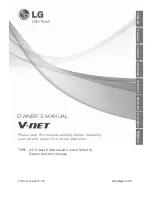
ZyXEL
OLT-2300 Series Support Notes
All contents copyright
ٛ
2006 ZyXEL Communications Corporation.
30
x L total fiber length.
To reduce fiber deployment, it is possible to deploy a remote switch or
concentrator close to the neighborhood. This will reduce the fiber consumption to
L km, but will actually increase the number of transceivers to 2N+2, as there is
one more link added to the network (Fig. B). In addition, curb-switched network
architecture requires electric power as well as backup power at the curb switch.
Currently, one of most significant operational expenditures for xLECs is that
providing and maintaining electric power in local loop. Therefore, it is logical to
replace the hardened curbside switch with an inexpensive passive optical splitter.
A passive optical network (PON) is a technology viewed by many as an attractive
solution to the first-mile problem; a PON minimizes the number of optical
transceivers, CO terminations and fiber deployment.
A PON is a point-to-multipoint (P2MP) optical network with no active elements in
the signals’ path from source to destination. The only interior elements used in
PON are optical passive components, such as optical fiber, connectors, splices,
and splitters, etc. An access network based on a single-fiber PON only requires
N+1 transceivers and L km of fiber (Fig. C).
How is PON optical performance specified?
Two of the optical performance of PON equipment is specified, are the
maximum/minimum optical link budget in decibels (dB) and the maximum
allowable fiber reach in kilometers (km). These two parameters mostly describe
the fiber plant supported by the PON equipment.
What kind of the fiber connector ZyXEL GEPON product used?
ZyXEL GEPON products are using SC/UPC type fiber connector for the OLT and
ONU. Below figure is the picture of the SC/UPC type connector.









































